Discover orthodontics In summary
orthodontics In summary
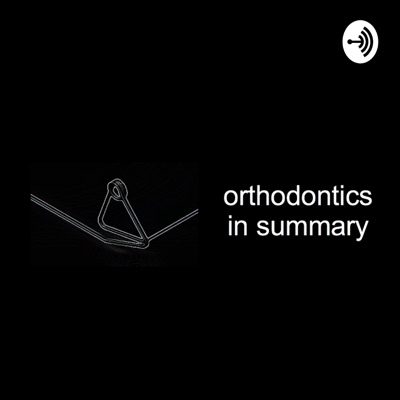
orthodontics In summary
Author: Farooq Ahmed
Subscribed: 65Played: 2,380Subscribe
Share
© Farooq Ahmed
Description
Farooq brings the key points, references and understandings from keynote webinars and papers in a concise podcast.
Providing easy access to gain the most from our esteemed speakers and experts.
*Important to note the information is from our interpretation as individual professionals, and may incorporate our opinions*
Providing easy access to gain the most from our esteemed speakers and experts.
*Important to note the information is from our interpretation as individual professionals, and may incorporate our opinions*
137 Episodes
Reverse
Orthodontics in interview!
Listen and enjoy the story of Flavia Artese: Associate Professor in orthodontics and editor-in-chief of Dental Press Journal of Orthodontics.
She describes her journey which led to a career in orthodontics and an interest in anterior open bites.
Flavia speaks of her role models and pet peeves.
Flavia is looking forward to welcoming all to the 2025 WFO (World Federation of Orthodontics) 10th International Orthodontic Congress in Brazil
https://www.wfo.org/
Simon Littlewood tells his story of orthodontics in his charismatic way.
Simon walks us through his achievement of the Cochrane Systematic Review on retention, what ideas led to the large body of work (link below).
Simon led the British Orthodontic Society's 'Hold that smile' campaign, and describes the process of how he did this, and also why he did it (link below).
We learn who Simon admires in orthodontics and outside the field.
We ask Simon your question on what retention regime he advises patient to use
And Simon gives his advise to a career in orthodontics
There were some light-hearted outtakes which we hope you will enjoy!
Links below:
BOS hold that smile campaign
https://www.bos.org.uk/Orthodontic-Retention
Cochrane Review in retention
https://www.cochranelibrary.com/cdsr/doi/10.1002/14651858.CD002283.pub4/abstract
Part 1
Mark explains the dilemmas and dogmas behind hypodontia management.
Dogma / idea influence opening vs closing
1. Canine guidance
o Dogma: Canine guidance better than group function
§ Only evidence of negative affects relate to canine inclination, when tucked in = greater muscular activity, seems to relate to degree of freedom in occlusion Sugimoto 2011
o Dogma: Proprioception from canine essential / special
§ Some have considered the proprioception of canines to be essential in the reflex arc of chewing.
§ However the ‘special’ proprioception not been shown to be of consequence.
SR on occlusal schemes: Abduo 2015
· Neither canine vs group function occurs naturally
· Occlusal schemes are dynamic
· Neither scheme pathological or therapeutic
· Crucial factor = degree of freedom in occlusion Sugimoto 2011
2. Implants:
§ Idea / dogma: Implants are ideal prosthesis / without risk
1. Infraposition of implant – vertical growth of adjacent teeth and dentoalveolus, result in relative infaocclusion / position of implant
o Between age of 10-30 = infraposition phenomenon of implants more obvious than 30-40 Schwartz-Arad 2015
o Ideal age of implant placement varies
§ Delay until growth complete to prevent infraposition of implant assessed through serial radiographs
2. Implant problems
o Tooth wear, loss of contact points Papageorgiou 2018 SR
o 5-10% implants fail LONG TERM Pablos 2019
Timing of orthodontic treatment
o Idea / dogma: treat hypodontia patient at the usual age i.e. adolescence with 2 stages
§ In between stages the following can occur: risk of root change, boney changes -most significant is of spaces are greater than 6mm = likely to require bone augmentation in 60-80% of cases Bertl 2017
o One should delay to treat in single phase or space closure Beyer 2005
Literature consistent
§ Nordquist 1975 - Silveira 2016 SR, supporting space closure better aesthetics, periodontal outcomes, and no TMD.
Lay people perception
Prefer space closure Qadri 2016
Dr Nicolas Salesse talks us through 2D lingual appliances in the lower arch for alignment, how the appliances work, the application as well as his protocol.
Advantages:
2d Vs 3d
· Direct bonding
· Unlikely to debond, due to low profile
· No complex bonding required (same as conventional labial brackets)
· 0 prescription bracket – no torque treatment conducted round wires round wires only
Cost
· Headway 2 dollars
· forestadent 2d 10-20 dollars per bracket
Disadvantages:
· Metal bracket can deform on opening / closing
· Complete alignment if required with aligners
Lower incisor alignment ideal:
· Bracket positioning lower arch
o Same height of centrals and laterals
o Relatively upright teeth, no significant tip
· Upper arch difficult for 2D brackets:
o large variation in bracket positioning between 1s and 2s
· Patient expectations: Lower expectation of lower arch
Challenges lingual appliances:
1. Reduced inter-bracket distance
2. In out discrepancy on the labial face due to lingual bonding
3. Bracket position height
4. Prescription
1/ Inter-bracket distance
· Smaller distance = wire is stiffer = greater force
· 2d brackets can have the archwire placed above the 2D bracket, increasing the interbracket distance, similar to Incognito
2/ In out discrepancy on the labial face due to lingual bonding
· Lingual appliances align lingual surfaces = discrepancy labial aspect due to variation in AP anatomy.
· Further from labial face – harder to control labial alignment
· Anterior teeth increase in thickness more Gingival
Height of bracket position
· Ideal 2D lingual bracket position = incisal as possible, less AP in out thickness, less variability.
· Lower arch incisal heights 2-2 same, no bend required
Prescription
· Only bend required is 2-3 in out direction
o Only bend lower 2-3 region = 2 bends
Protocol lower 2D brackets
· Digital set up plan IPR
· Bonddirectly, close to incisal edge. (no overcorrection)
· IPR
· Bond canine and premolar together: bonding composite prevent adverse affects on 3s
· Wires:
o Initially straight wire: such as 012NT
o 016NT + wire bends
Orthodontics In Interview: Jay Bowman USA
Join me as I interview Jay Bowman, who has over 150 publications, is an Angle Society member. World Federation of Orthodontists member. A university faculty member and reviewer for AJODO.
Jay Bowman is an expert of orthodontics, having innervated several products and appliances as well as having published 5 textbooks.
Jay discusses his journey into publishing on miniscrews and his interests.
We get to hear Jay’s one piece of advice to all orthodontists about a career in orthodontics.
Dr Flavia Artese describes one of the main causes of anterior open bites, tongue position, and the use of tongue cribs and spurs.
Conclusion:
Use of palatal cribs and tongue spurs are effective at managing AOBs, where the aetiology is anterior tongue position. however stability is related to resting tongue position long term.
Aetiology
Anterior tongue position at rest, not in swallowing, as low intensity and duration.
What is normal tongue posture?
The tongue should be behind the upper incisors, in both a AP and vertical plane.
Treatment for anterior tongue position involves changing the AP and vertical position
Correct tongue position: Proffit equilibrium theory, form follows function of resting tissues.
4 vertical tongue positions:
High:
Protrude upper incisors
Horizonal tongue ideal vertical but anterior
Procline upper and lower incisors
Low tongue
Not maintain transverse palate = constriction
Proclined lower incisors
Very low tongue
Severe AOB
Lowers retroclined and 2 occlusal planes
2 treatment types based on altering posture of tongue, both retract the anterior tongue (considered myofunctional appliances)
1. Cribs (LOWER TONGUE and AP RETRACT):
a. Upper arch appliance with loops
b. Type of tongue position correction: high and horizontal
2. Spurs (RAISE TONGUE and AP RETRACT):
a. Lower arch appliance with spikes
Changes in tongue position with cribs / spurs
· Less AP movement of the tongue (AP retraction),
· Raises tongue (for spurs) Schwestka 1995
· Reflex arc - Contact = pain = retract tongue AP
Does it hurt?
· VAS 0-10 = very low = 0-2 Pts had spurs upper and lower
Protocol
1. High or horizontal tongue position:
· Use fixed palatal cribs, used through mixed dentition
2. Low or very low tongue:
· RPE (tongue raises following RPE Ozbek 2009)
· Spurs lower arch, used through mixed dentition
Stability protocol:
· 2 stage approach – assess in interval between myofunctional appliance and fixed appliances
Retention protocol:
Stable
· Bonded retainers
Unstable
· Bonded retainers + spurs lower arch
Treatment stability relapse
· 25% orthodontics only Greenlee
· 18% orthodontics and surgical treatment Greenlee
· 0-17% Myofunctional Huang 1990
Quality of Life
· OHR QOL AOB management with palatal cribs correction = positive change more than 10 points: Pithon 2019
References
Stability of AOB treatment, surgical Vs non-surgical
Greenlee, G.M., Huang, G.J., Chen, S.S.H., Chen, J., Koepsell, T. and Hujoel, P., 2011. Stability of treatment for anterior open-bite malocclusion: a meta-analysis. American journal of orthodontics and dentofacial orthopedics, 139(2), pp.154-169.
Diagnosis and treatment Dr Artese paper
Artese, A., Drummond, S., Nascimento, J. and Artese, F., 2011. Criteria for diagnosing and treating anterior open bite with stability. Dental Press J Orthod, 16(3), pp.136-61
Orthodontics in Interview: Mark Wertheimer
Join me as i interview Mark Wertheimer and discuss his journey into interdisciplinary care,
Mark describes his bug bears and we find out more about Mark the cyclist and football fanatic.
We get to hear Mark's one piece of advise to all orthodontists about a career in orthodontics.
“Even though the panelistswere huge aligner users, the statements are not so in favour of aligners, they are surprisingly reasonable.” “It’s very difficult to find a real aligner experts without a conflict of interest. Almost impossible.” “If you explain the differences honestly, most of my extraction patients choose fixed appliances. I’m not selling aligners.” “Direct printing is the real breakthrough, but right now it has too many shortcomings to be a standard technology.” “I am pessimistic. We must fight for our profession — against the idea that technology can replace orthodontists.” In this episode, I’m joined by Vincenzo D'Antò, lead author and contributing author of this year’s two major consensusstatements on clear aligners. We explore the key findings from these landmark papers and how they translate into real-world clinical practice. Vincenzo shares his own views on aligners, their limitations, and his pragmatic approach to integrating hybrid mechanics, particularly skeletal anchorage, into alignertreatment. We discuss recent innovations in aligner therapy, distinguishing those with genuine clinical value from those that are ineffective. We also hear Vincenzo’s candid concerns about the future of orthodontics. 03:00 – Why did youcreate this Delphi aligner consensus?05:03 – How were thealigner experts selected for the study?06:51 – Do conflictsof interest affect aligner consensus statements?11:49 – Crowding: Whydoes the Alharfi 2025 SR show better outcomes for aligners?15:49 – 7 vs 10 vs 14days: How often should patients change aligners?20:03 – Are complexmovement failures a design flaw or inherent to aligners?22:19 – What trulylimits clear aligner biomechanics?25:46 – Is hybridorthodontics the future of predictable aligner treatment?29:35 – What hybridmechanics do you use most in practice?32:05 – Can wereliably treat extraction cases with aligners?36:03 – Is betterOHRQoL worth compromised occlusal outcomes?39:11 – Do alignerswork for growing patients, or is this just marketing?41:34 – Why ishigh-quality aligner research still so weak?44:30 – Final advice:What should orthodontists focus on for the future? Click on the link below to view previous episodes, to refresh topics,pick up tricks and stay up to date. Please like and subscribe if you find it useful! Please visit the website for this interview podcast:https://orthoinsummary.com/is-there-really-a-consensus-on-aligners-a-delphi-author-explains-orthodontics-in-interview-vincenzo-danto/ Spotify podcasts for other platforms YouTubehttps://youtu.be/jpMUbYINxzg #OrthodonticsInSummary#VINCENZOD'ANTO#Orthodontics#ClearAligners#AlignerTherapy#HybridOrthodontics#SkeletalAnchorage#TADs#OrthodonticEvidence#OrthodonticsInInterview#FarooqAhmed#VincenzoDAnto#OrthodonticBiomechanics#OrthodonticResearch Farooq Ahmed🕒Timestamps of Key Questions & Answers
Retention, What Should We Do Now? Join me for a update on retention, I explore a review of currentliterature and what the changes are recommended to our retention protocols,research of stability, critical look of retainerfailures and factors to consider in design and location of fixedretainers, as well as monitoring recommendations based on Clinical PracticeGuidelines. This podcast is based on recent literature as well as two excellentlectures from this year’s British Orthodontic Conference by Marie Cornelis(Australia) and Simon Littlewood (UK). Recommendations for the maxilla:· Low risk of relapse = Removable retainer (polyethyleneor polyurethane)· High risk of relapse = Dual retention with fixedand removable retainers· Fixed retainero 3-3 if occlusion allows, most likely 2-2 designunless high risk of canine relapseo Location slightly gingival due to occlusalforces and account for Increase in overbite with age (Littlewood) Recommendations for the mandible Lower archo Low risk of relapse = fixed retainerso High risk of relapse = dual archo Fixed retainer 3-3§ Position slightly incisal Mandible: slightlymore incisal, greater cleanability, less gingival inflammation – Petsos 2023 Monitoring regime· 1 month – fixed retainer (greatest timepoint offailure)· 3 month – removable retainer (motivation ofcompliance)· Every 3-4 months Wouters 2018· 1 year retention necessary Wouters 2018· Annual check-up Wouters 2018o Greater likelihood of compliance if annualcheck-upo General dentist Improve compliance· 2/3rds stop wearing after 4 years,All-Moghrabi 2018· Visual photo of relapse to patient and parentsincreased compliance Vs patient only or instructions only Lin 2015 (1.5Hrsgreater wear) Clinical PracticeGuideline For Orthodontic Retention Wouters 2019 (open access paper)
“The purpose of Dental Monitoringisn’t to disconnect you from your patient, it’s to make sure you see them atthe right moment for the right reason.” “Fix problems early andyou don’t have problems. If you intercept an issue straight away, you can oftenavoid side effects altogether.” “If you don’t change yourprotocol, DM won’t reduce appointments, you do. The technology empowers smarterscheduling, not magic.” “AI isn’t replacingorthodontists. It’s replicating their eyes, helping you catch what you’d wantto see, every single week.” In this episode, I’m joined by PhilippeSalah, CEO and founder of DentalMonitoring. We explore the evolution of AI-based remote monitoring in orthodontics, how it aims to change the way we communicate with patients, provide data of our practice but also where the evidence remains mixed. Philippe addresses questions on reliability, patient compliance, and the impact on rapport when monitoring replaces in-personvisits. We discuss the real-world challenges of cost, protocol adaptation and workflow change, as well as the future role of AI, sustainability, and data-driven insight in clinical practice. 02:07 – How did youcome up with the concept of Dental Monitoring?08:50 – How accurateis Dental Monitoring, and what happens if the AI misses something?13:55 – Where do yousee the benefits of Dental Monitoring if studies show limited reduction invisits or treatment time?18:56 – Is remotemonitoring less able to build patient rapport compared to in-person officevisits?24:53 – DentalMonitoring comes at a financial cost, what is the return on investment forclinicians?29:48 – Is DentalMonitoring for every patient, given compliance and scanning challenges?33:02 – AI consumesglobal energy resources, how does Dental Monitoring address environmentalresponsibility?36:52 – Tell us aboutDental Monitoring Insights and how it impacts clinical practice.42:28 –What advicewould you give to orthodontists Click on the link below to view previous episodes, to refresh topics,pick up tricks and stay up to date.🕒Timestamps of Key Questions & Answers#OrthodonticsInSummary#DentalMonitoring#AIinOrthodontics#DigitalOrthodontics#RemoteMonitoring#OrthodonticInnovation#AlignerTechnology#OrthodonticEvidence#FutureOfOrthodontics#FarooqAhmedFarooq Ahmed
“Will AI it replace the orthodontist? No. Will it replace the bad orthodontist? Hopefully, yes.” “With AI, you could probably get prediction accuracy down to less than 10% , because it can analyze what the human brain cannot” “Computers are designed to crunch data. That’s all they do. The rest is up to you.” “AI is not going away. There are billions invested in this technology. You better get on with the program.” “Don’t drive your car inreverse… Don’t go backwards.” In this episode of Orthodontics in Interview,I’m joined by Jean-Marc Retrouvey, researcher and innovator in AI-drivenorthodontics. We explore the concept of the “virtual patient” and how artificial intelligence is reshaping orthodontic diagnosis, biomechanics, and aligner staging. Jean-Marc shares his candid thoughts on the pace of change inacademia versus industry, the role of AI in predictions within orthodontics, and how clinicians can embrace AI without losing their judgment. With insightsfrom his work in both universities and industry projects, Jean-Marc offers a compelling vision of how orthodontics will evolve in the AI-era. · 01:47 What isthe “virtual patient” concept?· 03:39 Wherewill AI impact clinicians, diagnosis vs outcomes?· 07:21 Can AIbe our biomechanics co-pilot?· 10:34 Why arealigner companies behind in AI?· 12:57 Whatpractical changes will AI bring to aligner staging?· 15:20 Why didyou say academia is too cautious for AI’s pace?· 19:24 Shouldorthodontic AI education come from industry, and is that biased?· 22:13 DoesRicketts’ 1983 “judgment over computers” still hold?· 25:13 Will AIreplace clinician experience and literature in EBP?· 30:44 Are weat risk of data overload with 3D/CBCT integration?· 35:01 How dowe use AI responsibly given its environmental costs?· 37:59 Why movefrom academia to industry, and what are you building at LuxCreo?· 41:11 Whitepapers vs peer-review: what’s the real difference?· 44:35 Your one piece of advice toorthodontists? Click on the link below to view previous episodes, to refresh topics,pick up tricks and stay up to date. Please like and subscribe if you find it useful! Please visit the website for this interview podcast:https://orthoinsummary.com/will-ai-change-orthodontics-orthodontics-in-interview-jean-marc-retrouvey/ Spotify podcasts for other platforms YouTubehttps://youtu.be/UDfDTtLZm4A #orthodontics #farooqahmed #jeanmarcretrouvey#AIorthodontics#clearalignertherapy #orthodonticsinsummary#orthodonticsininterview Farooq Ahmed🕒Timestamps of Key Questions & Answers
“The biggest variable with any clear aligner treatment is the patient themselves — not the plastic.” “We must remain the conductors of the orchestra, not the technicians of an algorithm.” “Aligners are not inferior to fixed appliances — but neither are they magic. The truth lies somewhere in between.” “Research often lags years behind reality, so we’re not judging today’s aligners with today’s evidence.” In this episode of Orthodontics in Summary,I’m joined by Guy Deeming, orthodontist, business leader, and Director of Professional Development at the British Orthodontic Society We dive into the reality of clear aligner therapy, discussing the recently published Delphi Consensus Statements and if theyagree with his clinical practice. Guy discusses compliance and where the orthodontist role has changed in the era of algorithms. Guy shares candid insights into alignerlimitations, clinical pearls for complex cases, and his vision for orthodontic education. · 01:12– Are aligners now the go-to appliance for mild to moderate crowding?· 03:22– Delphi consensus statement:What are aligners’ limitations?· 05:16– Why do clinical results differ so much from research findings?· 11:08– “no-go” cases for aligners?· 15:28– Extreme cases on social media: genuine progress or misleading?· 17:56– Are orthodontists just technicians of aligner companies’ algorithms?· 24:57– Profitability, corporate influence, and the in-house aligner movement.· 28:30– Extraction cases with aligners: realistic or flawed?· 32:52– Distalisation: predictable movement or just tipping?· 36:31– Should orthodontic training programmes include formal aligner training?· 44:50– Direct-to-print aligners: fad or the next revolution?· 48:08– Guy’s one piece of advice to orthodontists on approaching aligner therapy. Click on the link below to view previous episodes, to refresh topics, pick up tricks and stay up to date. Please like and subscribe if you find it useful! YouTubehttps://youtu.be/wITGxEw1ZNs #orthodontics #farooqahmed #guydeeming#aligners#clearalignertherapy #orthodonticsinsummary#orthodonticsininterview Farooq Ahmed
Join me for a podcast summary looking at Ai in orthodonticsand its clinical application. A growing topic in orthodontics, and one of themost featured topics at this years AAO. This summary is based on 3 lectures fromthis year’s summer meeting by Juan Francisco Gonzalez & Jean Marc Retrouvey,Tarek ElShebiny , Jonas Bianchi and Lucia Cevidanes. We will look whatAi is, the way it works and its clinical application, as well as a criticalview on this young field. What is Ai: 1. Technology that enables computers and machinesto simulate human intelligence, perform 1 task very well, e.g. voice command, Youtuberecommendations2. Predictive modelling, makes calculations, convert information into numbers or categoriesand recognise patterns Levels of Ai: Machine learning, Neural Networks and Deep Learning1. Machine learninga. The ability for a machine to learn from data andpast experience to identify patterns and make predictions 2. Neural Networks a. Specific model which relies on interconnectednodes, which perform a mathematical calculation of associations , patterns, andprobabilities 3. Deep learninga. Is a complex version of neural networks Virtual patient· CBCT segment + STL file – segmentation of theteeth and roots, with labelling of different stuctureso Can print model, visualise ideal vector andcalculate ideal vectoro However clinician still required to establish biomechanics · CBCT integration for aligner cases, Unpublishedthesis Khalid Alotaibi:o Treatment planning confidence increased 50%, leastchange was treatment planning modification Diagnostic data:· Ai cephalometric tracingo 46% of 24 landmarks 2.0mm withino 4 different programmes Iortho, Webceph, Orthodc, cephxo All landmarks had good overall agreement butvariation in identification · Facial Analysis· Automated 3D facial asymmetry analysis usingmachine learning Adel 2025o Study – 7 landmarks o Identified manually and with deep learning o 5 accurate, 2 significant difference but notclinically relevant Diagnostic accuracy of photos· Clinical photos assessment by Ai, and comparedto clinical examination· Sensitivity 72%, specificity 54% Vaughan & Ahmed2025 Growth prediction· Poor agreement age 9 Comparison between direct, virtual and AI bonding· DIBs – uses Ai for bonding· Compare Ai Vs user modified indirect bonding Vsdirect bonding (gold standard), 0.5mm significant · Incisors accurate· Premolars and lower laterals inaccurate Monitoring Previous podcast exploring the accuracy of remote monitoringo with Ferlito 2022 80%repeatability from 2 scans 44.7% repeatability and reproducibility Bracket removal from scan and retainer fitTarek Assessment of virtual bracket removal by artificialintelligence and thermoplastic retainer fit AJODO 2024o Retainers for both – clinically acceptable FDA approval of Ai in dentistry· FDA - Software of Medical Diagnosis § 4 dental:· Dental Monitoring· Ray Co · X-Nav technologies· Densply Sirona What’s next· More data learning to train AI model· Robotics customising appliances per patient
Can you really treat complex cases with aligners?“We’ve done a study of myextraction cases... when you do one or two sets of additional aligners, thenyou will be able to get everything to ideal” “I will never try to bring17 and 18 mesial to close space” “The staging that eachcompany does, it does make a difference. If your technician doesn’t understandhow to move the teeth in the right stages… it’s never going to happen” “If I have a patient whois not wearing the Class II elastics, then you cannot distalize.” “If you learn to say no tosome of your patients, then you will be a more successful orthodontist.” In this episode of Orthodontics in Interview,we sit down with world-renowned orthodontist Dr. Chris Laspos to explore thereal-world efficacy of aligners, hybrid treatment strategies, and the evolvingrole of auxiliaries and digital planning in modern orthodontics. With over 25years of experience and a background in craniofacial care and surgicalorthodontics, Chris shares insights into clinical decision-making, caseplanning, and the mindset needed for success. Extraction treatment, anterioropenbite and distalisation are discussed and how to improve outcomes, thisinterview is packed with clinical pearls and honest reflections of alignertreatment. 00:00 - Introduction 01:45 - How did you find your way into aligners as an orthodontist? 03:42 - How do you reconcile aligner efficacy data with your clinical results? 06:24 - Can extraction cases be effectively treated with aligners? 07:10 - Do you prefer fixed appliances or aligners for extractions? 09:10 - Do you use more auxiliaries with aligners to compensate for efficacy? 12:03 - Are aligner systems heading toward minimal differences like fixed appliances? 12:49 - Do some aligner systems truly offer better outcomes? 17:59 - How do you manage anterior open bite cases with aligners? 21:02 - How predictable and reliable is distalization with aligners? 24:27 - Can aligners be used effectively in surgical orthodontic cases? 27:54 - What are your thoughts on remote/virtual monitoring? 30:26 - What are common mistakes orthodontists make with aligners? 32:33 - Should general dentists use aligners in practice? 34:15 - Could AI or case simplicity justify aligners by non-specialists? 38:12 - Beyond clinical skill, what makes a successful orthodontist? orthodontics #farooqahmed #chrislaspos#aligners#clearalignertherapy #orthodonticsinsummary#orthodonticsininterview Farooq Ahmed
Interproximal Reduction, When, Why, and How | 9 MINUTE SUMMARY In this episode, I dive into the fundamentals of interproximal reduction(IPR) when to use it, why it matters, and how to do it effectively.We’ll cover how much IPR can safely be carried out, compare differentclinical protocols and their pros and cons, and take a critical look at howaligner software plans IPR (and where it may fall short).This summary is based on Dr. Flavia Artese’s insightful lecture at therecent American Association of Orthodontists Annual Session in Philadelphia,along with insights from my own clinical research and experience. How much IPR is possible? Recommended amount ½ to 1/3 of outer enamel Estimate with periapical radiographs are inaccurate, under-estimateas well as over estimate Meredith 2017 Brine 2001 Quantity of the enamel each interproximal surface Kailasam2021 systematic review, with an excellent table created by Bosio in 2022 highlightingthe enamel present and hypothetical safe reduction, ranging from 0.3-0.7mm,with 5-10% greater enamel on the distal surfaces Can all teeth have IPR?· Triangular teeth are idealo Large interradicular distance, roots canapproximate with no issue· Square shaped teeth not idealo Reduced interradicular distance, rootapproximation of 0.8mm = loss of crestal bone Taera 2008 Are we accurate with IPR? Johner 2013 AJODO· Manual strips Vs rotary disc Vs oscillatingstrips = all underperformed IPR by up to 0.1mm Protocols: Small Vs Large · 0.1-0.2mm manual strips· 0.3mm+ larger reduction · Polishing required – If not = 25 um furrows retainplaque Jack Sheridan1989 Separation posterior region· Separator – Requires measuring of premolarbefore and after· Bur – needle buro Parallel occlusal planeo Recontour tooth surface to create contact point· No separator - requires contact point to be broken, advantageis the measurement of the IPR site is accurate Bolton’s analysis· Based on excess, rather than tooth removal Proportionality· Width o Canine 90% of central incisoro Lateral 70% of central incisor IPR planningBolton’s discrepancy + Tooth proportionality= whento add or remove tooth structure However· “Don't do pre-emptive stripping for balancingtooth mass ratios between arches. Chances are it will work out just fine” Jack Sheradin 2007 JCO Method of use for 4 mm of IPR:· Posterior to anterior – Jack Sheridano Posterior IPR first, followed by distalisation,e.g. 4-5 first, distalise 4o Maintain arch length with stops etc, maintainanchorage· Anterior to posterior – Farooq o Anchorage preserving o Tony Weir 2021 the most common site in clinicalpractice was the lower anterior segment IPR on overlapping teeth· Not possible to achieve ideal anatomy withmotorised IPR instruments · Posterior IPR first, distalise, followed byanterior alignment and IPR – Flavia· Use of handstrips is possible on overlappingteeth - Farooq Limits of IPR· 4-5mm, although Sheridan described possible 8.9mm,technically challenging· IPR is not a possibility for sagittaldiscrepancy: Greater Bolton’s discrepancies in class 3 and class 2malocclusions, SR 53 studies Machado 2020, greater in class 2 and 3 casesalbeit a small difference of 0.3-0.8% Retained primary 2nd molars· Idealise occlusion· Consider root morphology divergence, as post IPRspace may not closeo If divergence greater than crown, reconsider asspace closure unlikely Why do we need to use IPR with aligners? Dahhas 2024· Alogrythm reduces the number of aligners· More IPR rather than saggital correction· IPR staged inappropriately with large IPR whilstcontact point overlap, which is difficult to perform adequate anatomicalreduction
Join me for a summary of CBCT use inorthodontics, where I look into the current risk of cancer with CBCT use, the differenceit can make to treatment planning, and the 3 most common incidental findingsorthodontists should be aware of. This was one my highlight lectures from lastyears British Orthodontic Conference by Consultant Dental Radiologist, SimonHarvey. How much radiation comes from dentalCBCT, medicine?Effective dose of modern machines:· Dose from full DPT with adigital system = 20-25µSv· KAVO, MoritaX800 4 x 4cm =16uSv· FDA values of CT scans acrossthe boy from Lubar 1500uSv – Heart 16000uSvFACT 1 – effective dose in dental imagingare far below the rest of medicine Background radiation· Terrestrial radiation· Cosmic radiationo Flight London – New York 56uSv– cancer UK ‘does not effect risk of cancer, even for frequent flyers’, 4uSvper houro Pilots do not have an increasedrisk of cancerUK 3000 uSv annuallyFACT 2 – EFFECTIVE DOSES IN DENTAL IMAGINGARE FAR BELOW THE NATURAL BACKGROUND RADIATION American Association of Physicist inMedicine AAPM“evidence supporting increased cancerincidence or mortality from radiation doeses below 100mSv is inconclusive” –cancer incidence and mortality from the use of diagnostic imaging are highlyspeculative, discourage these prediction of hypothetical harmFACT 3 EFFECTIVE DOSES IN DENTAL IMAGINGARE SO LOW, THEY DO NOT CAUSE CANCER Clinicians improved confidence andconsistency in treatment planning decisions.Impacted canine:· 3 radiographs - namely occlusal view, opg , periapical = still not confident about prognosis.· CBCT = clear follicle and impactedcanine proximity to adjacent tooth, = easily make up the decision estimatingprognosis o 22%-44% change of plans Hodges 2013 Stoustrup 2024 change in treatment plans ofimpacted teeth. The majority related to change in planning, with approximately10-20% a change in exposure Vs extraction. Keener 2023 · Cleft – quantification of bonedefect volume for grafting and localisation of ectopic teeth· Surgery – location of importantanatomical structures 3 Commonincidental findings for orthodontists· Dense bone island- o Radiopacity with no radiolucenthaloo Mandibular premolar regiono Harmless, may resorb roots ifcontact it· Sinus mucosal thickeningo Antrum floor intacto Only concern if 5mm+· Trabecular patterno Around inferior dento-alveolarcanalo No corticated boardero normal in children, technicalreason is physiologic response as more RBC’s are developing surrounding thatarea. Pregnant women –yes as not irridating pelvic reason, CBCT beam is horizontal so no risk Conclusion1. CBCT superior for resorption,material change to treatment plans and improve confidence of the orthodontists2. No recommendation for takingfull mouth CBCT instead of DPT ahead of starting every orthodontic treatment asroutine and x rays should never go hand in hand3. Small volume CBCT does is solow it doesn’t cause cancer
Orthodontics In Interview: Aligners, Limited or Just Misunderstood? tommaso castroflorio “The biggest difference in overcoming the limitation (of aligners) is to understand how to control aligner deformation” “We need to improve the available knowledge about aligners, because we need to control the companies, we do not need companies controlling us” “I think you can treat also complex cases, in my practice I treat extraction cases” “There are limitations in every technique, I think that the good orthodontist understands how to manage the limitation and how to overcome them” “Large mass 3D printing will represent an important evolution in orthodontics, aligners and braces” Tommaso explores the current understanding ofaligners, there limitations in terms of an appliance and scientific research. We explored the debate of aligners treating complex cases, why attachment designs still have limitations, and the role of aligners as functional appliances. We discuss emerging concerns of micro and nano-plastic toxicity andenvironmental concerns of aligners. TIMELINE 00:00:00 Introduction of Dr Tomasso Castroflorio 00:00:51 Tomasso's Early Experiences with Aligners 00:08:21 What are the Limitations of Aligners? 00:11:24 How do we Overcome Limitations with Aligners? 00:17:59 Should Aligners be Restricted to Mild to Moderate Cases? 00:20:22 Research IndicatesAligners Only Tip Teeth into Extraction Sites, Do you Agree? 00:25:50 Importance of Visualization in Orthodontics? 00:29:27 Are Functional Appliance Aligners Advantageous over Conventional Functional Appliances? 00:35:08 Has There Been Over-emphasis on Attachment Design? 00:44:18 What are the Consequences of Microplastics and Aligners? 00:50:32 What is the Future of Aligners? 00:53:54 Who do you Admire the Most in Orthodontics00:55:36 Advice from Tomasso to all OrthodontistsClick on the link below to view previous episodes, to refresh topics, pick up tricks and stay up to date. Please like and subscribe if you find it useful! Please visit the website for this interview podcast:https://orthoinsummary.com/orthodontics-in-interview-aligners-limited-or-misunderstood-tommaso-castroflorio/ #orthodontics #farooqahmed #tomassocastroflorio#aligners#clearalignertherapy #orthodonticsinsummary#orthodonticsininterview Farooq Ahmed
Join me for a summary of recent long-term research of resorbed teeth due to impacted canines. This podcast is based on an excellent lecture by Julia Naoumova delivered at last year’s British Orthodontic Conference. Part 2 with focus on the prognosis of resorbed teeth from impacted canines, and follows on from part 1 with explored outcomes of open Vs closed exposures of impacted canines – see here for part 1. Root resorption of incisors reported at 19-67% Erikson 2000 Walker 2005, Mitsea 2022Anna Dahlén and Julia Naoumova 2024 retrospective CBCT study n =27 incisorsMean Follow-up average 9 years (5.5-14.6)Patient reported outcomesSurvival 100%Horizontal grade 3 moderate resorption n=17 (resorption inner dentine not involve pulp moderate)Horizontal grade 4 severe resorption n=12 (pulp exposed severe)Vertical grade 3+ severe resorption n=7 (resorption 2mm-1/3rd moderate)oVertical grade 4 extreme resorption n = 1 (resorption 1/3rd +)No significant difference in any grade of resorption long term of the following:Symptoms Mobility and ankylosisDiscolourationIncrease gingival pocketing but not clinically significant RR horizontal changes with time No change 81%Worse 4%Improve 15%RR vertical changes with timeNo change 43%Worsen 57%Expected as had orthodontic treatment as wellPrevious research 1-23 years Survival 93-100% Falahat 2008 , Bjerklin 2011, Becker 2005, Jönsson 2007Jönsson 2007 showed grade 1 mobility when root length < 10mm Conclusion:Extraction of asymptomatic based purely on root resorption should be routinely performedPaper by Anna Dahlén and Julia Naoumova 2024 Longitudinal study of root resorption on incisors caused by impacted maxillary canines—a clinical and cone beam CT assessment https://doi.org/10.1093/ejo/cjae052
Join me for a summary of the management of impacted canines, the latest evidence regarding different techniques for alignment. This podcast is based on an excellent lecture by Julia Naoumova delivered at last year’s British Orthodontic Conference. Part 1 will focus on recent findings of a modified open exposure technique Vs closed exposure, in terms of duration but also other key outcomes, health, pain, use of analgesics, time absent from school and costs. The next episode, part 2, will look at the prognosis of resorbed incisors related to impacted canines long term. Previous research no difference between closed Vs open exposure for alignment, aesthetics, treatment time, surgical success, treatment times. Limited to 2D views Parkin 2017, Sampaziotis 2018, Cassina 2018. Questionnaire of current decision making of open Vs closed: n=48 orthodontists = current clinical decision making by orthodontists based on preference Naoumova 2018Multicentre RCT Margitha Björksved 2018, 2021 Modified open exposure with Glass ionomer OPen Exposure, first described by Nordenval 1999 6/12 of spontaneous eruption Traction with orthodontic appliancesResults Total time: no difference 26 months (95% CI −3.2 to 2.9, P = 0.93) Canine eruption time: Open exposure quicker by 3 months 8.5 months Vs 11.5 months (95% CI 1.1 to 4.9, P = 0.002). With no traction in open exposure group No difference in periodontal status, root resorption, surgery time, complications, Pain: greater in closed group Greater pain with bilateral open exposure Closed exposure more painful applying traction Analgesics use (preliminary data): Day 1 nearly all patients use Day 5 drops to less than 50% of patients use Day 10 most have stopped taking analgesics Costs: – no difference €3,400 healthcare costs €6,300 including patient costs Missed days of school (preliminary data) Day 1 - 76% open Vs 65% closed exposure Day 2 - 3% open Vs 6% closed exposureOpen exposure with GOPEX Not appropriate for: Close to adjacent tooth, to avoid material on adjacent teeth Very high canine position Older patient – start traction straight away, probability of ankylosis increases Cernochova 2024 1% at age 15 4% at age 20 14% at age 25 97% at age 45Conclusion: Both open and closed techniques are viable, however with open exposure of GOPEX technique the canine erupts spontaneously and quicker Less pain with open exposure unless bilateral Most patient will miss 1-2 days from school Pain relief common for the first 5 days, but maybe used until day 10PapersOpen vs closed surgical exposure of palatally displaced canines: a comparison of clinical and patient-reported outcomes—a multicentre, randomized controlled trial Margitha BjörksvedOpen and closed surgical exposure of palatally displaced canines: a cost-minimization analysis of a multicentre, randomized controlled trial Margitha Björksved
Join me for a summary looking at remote monitoring in orthodontic clinical practice, and if it can improve, quicken and enhance orthodontic clinical practice. This podcast is based on an excellent webinar by Jonathan Sandler and Juan Carlos Varela, as part of the Angle-net webinar series. I discuss how Dental Monitoring works, the proposed advantages and a review of the emerging research on this innovation in orthodontics.
What is Dental Monitoring?
AI software which assesses occlusal and dental changes through a series of intra-oral photographs taken by the patient using their smartphone
How does it work?
Upload STL / digital study model
Ai segmentation of teeth which maps digital study model to the photos
Aligner fit analysis:
Discrepancy between tooth surface and aligner fit
Either proceed, continue wear or see clinician
Fixed appliances
Assess rate of movement and schedule appointment
Other proposed benefits
Oral hygiene assessment
Breakages
Retention changes
What do patients think of it?
Patients attitudes to remote monitoring
81% interested in reducing number of appointments due to telemonitoring – Dalessandri 2021
25% of patients found scans difficult to perform, with duration of scan 2-17 minutes Hansa 2020
Does it reduce appointments and make treatment quicker? Sangalli 2024
Decrease the number of in-office visits by 1.68–3.5 visits
No difference in treatment duration
No statistical reduction in emergency appointments
Are treatment outcome better (aligners)?
No difference in tooth movements Hansa 2021
No difference in number of refinements Hansa 2021
PAR changes – no difference in quality of outcomes Jarad Marks 2024
Is oral health better?
DM reduced plaque scores Costi 2019
31% Improved hygiene Manzo white paper
Other innovations with remote monitoring?
Remote STL files
Scan taken without patient attending the practice
Scanbox
Formulate STL file and fit aligner in surgery
Is Dental Monitoring accurate? Ferlito 2022
80% repeatability from 2 scans
44.7% repeatability and reproducibility
Discrepancy between scanbox and intra-oral scan varied between 0.5-1.9mm, angular measurements maximum error 8.9 degrees
Conclusion
2-3 appointments less
No difference in overall duration
Some people struggle to use
Accuracy and repeatability variable
No difference in the quality of the outcome
Areas which are of concern
Unknown accuracy of occlusal assessments from a reliable retruded contact position
Patient motivation maybe better delivered in person
Ai environment cost 2-3% of energy used by data centres
Other ways to reduce time?
Diagnostic and treatment planning acumen
Identify main aspect of malocclusion and address through efficient mechanics



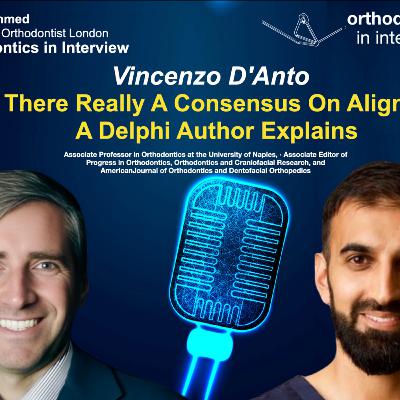
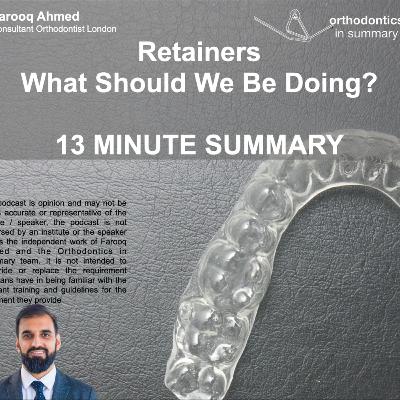
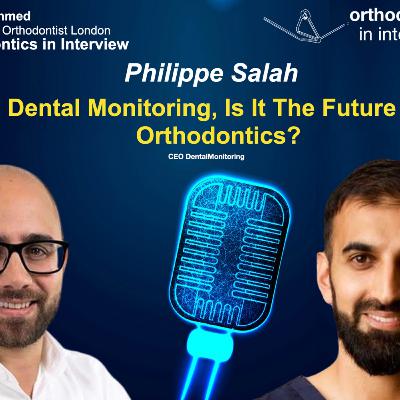
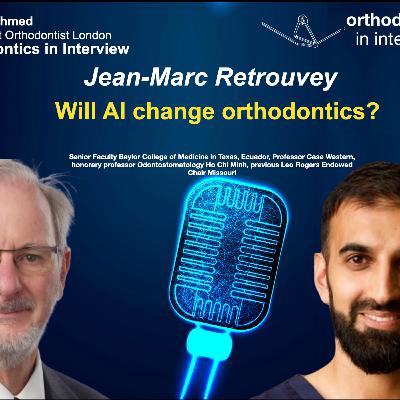
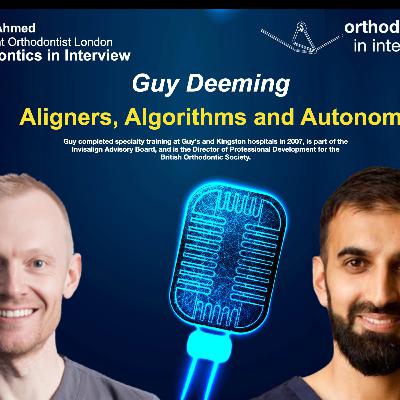

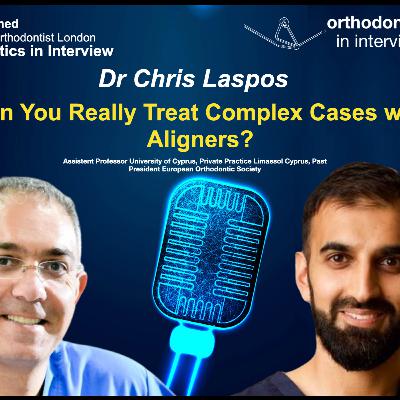
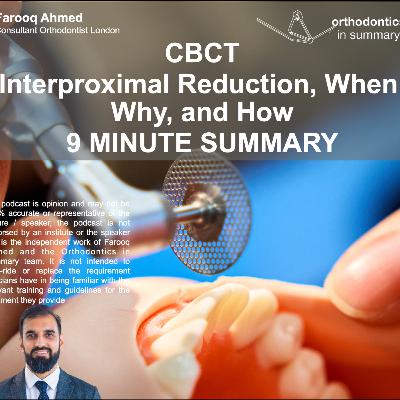
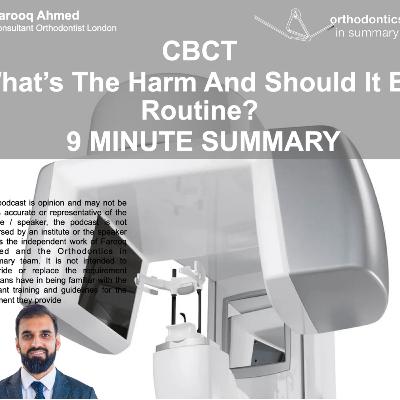
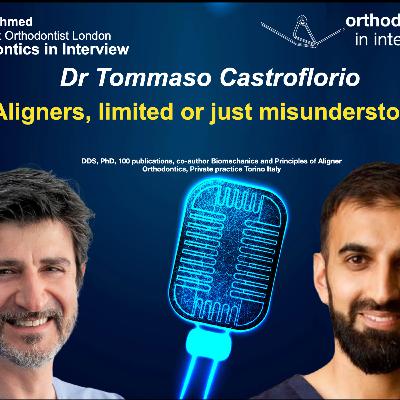





Har du ofte blitt avvist til et intervju bare på grunn av en dårlig skrevet CV? Dette skjedde med meg nylig. Nå, for ikke å miste en god jobb på grunn av en slik bagatell, bestemte jeg meg for å lage en profesjonell CV for meg selv ved å bruke ressursen https://www.cvmal.no/